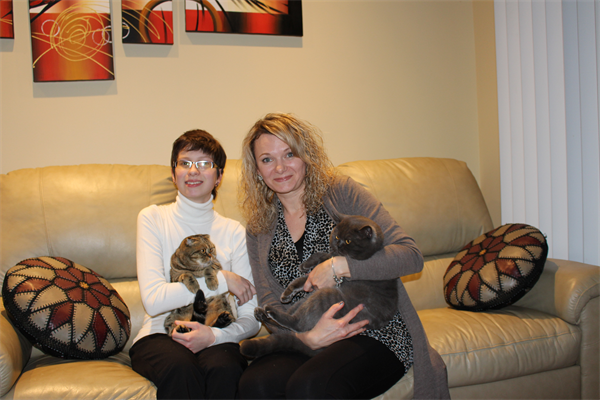When Valeriya Zolotorgova was 10, her mother began to notice significant changes in the young girl’s hearing and vision. Following visits to doctors, Valeriya was eventually diagnosed with a brain tumour in March 2013. It was not cancerous, but needed monitoring.
A year later, an MRI showed the tumour was slowly growing. A second biopsy confirmed it was medulloblastoma, the most common childhood malignant brain tumour with a 30 to 40 per cent mortality rate.
Her mother says the 12-year-old took the diagnosis in stride. “She was stronger than me actually…I wasn’t prepared,” says Oxana Zolotorgova, of Oakville, Ontario. “I was thinking positive; that it was something, but not cancer.”
She and Valeriya moved into the hospital for a year while her daughter had surgery and underwent intensive chemotherapy and radiation treatments. “We went for the biopsy but we never came back [home],” remembers Zolotorgova.
TFRI-funded neurosurgeon and researcher Dr. Michael Taylor, at The Hospital for Sick Children, is Valeriya’s current doctor. Not all types of medulloblastoma are the same, he says – four different subtypes have been identified, ranging from aggressive to indolent. Valeriya had a Wnt tumour, a “good” type of the cancer in terms of prognosis and treatment.
Children that survive medulloblastoma often experience negative side effects from surgery, radiation, and chemotherapy. Part of Dr. Taylor’s research is focused on how this can be avoided for children like Valeriya by using a more personalized approach to treatment.
“When we talk to parents of children with the very good types of medulloblastoma, many of them feel they would be willing to risk a slightly increased chance of a recurrence if they could have a large boost in [their child’s] IQ,” said Dr. Taylor, noting that the team hopes to do a clinical trial in the near future. “We want to keep the survival rates high, and have those children be as functional as possible.”
Zolotorgova agrees. Chemotherapy and radiation were difficult for Valeriya, and left her with some balance and cognitive delays. She would have preferred her daughter to have less-intense treatment had it been an option. She believes Dr. Taylor’s research is very important for future patients.
“I hope that this research is going to help [doctors] understand in the future that maybe some kids don’t need to have such an aggressive therapy,” she says. “So doctors don’t do more than [they need] to do to treat the tumour.”
Valeriya, now 13, is back in school, and working to return to a “normal” life. She is taking drawing and violin lessons, loves arts and crafts, and is working to regain her balance so she can return to sports she used to enjoy, such as biking and rollerblading.
“I hope she will be able to be like all the kids around her,” says Zolotorgova. “And I hope she’ll have a kind heart and help people who need it, because she went through all of this.”

Valeriya (left) with her mother and two cats